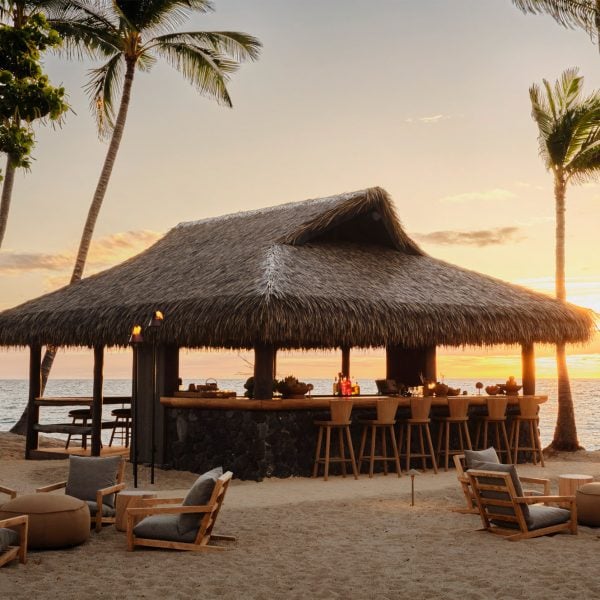Winding pathways and thatched roofs made of recycled plastic are among the features at the Kona Village resort in Hawaii, which Walker Warner Architects designed to replace a 1960s hotel destroyed by a tsunami.
Located on Hawaii’s Big Island, the property replaces a resort of the same name that was decimated by a 2011 tsunami.
The original Kona Village had opened in the 1960s, becoming a “beloved hideaway” featuring traditional island architecture.
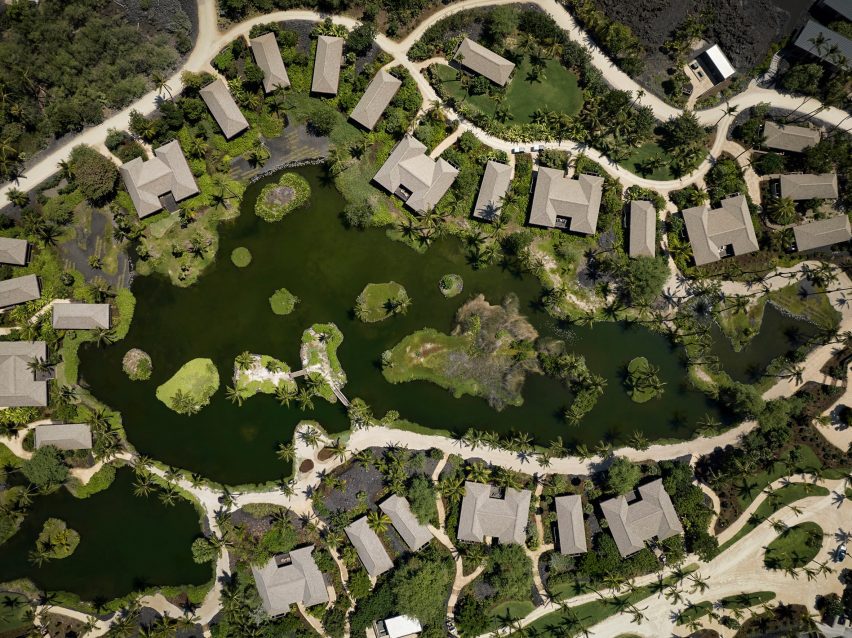
For the 81-acre (33-hectare) property, Walker Warner Architects – a studio based in San Francisco – sought to honour the site’s history and landscape and immerse guests in “the archetypal island experience”.
“Walker Warner set out to respectfully restore the relaxed Pacific Island style that epitomised the original property while elevating it with modern touches and sustainable innovations,” the firm said.
“Carefully conceived to emanate a feeling of organic, approachable luxury, the resort’s long-awaited second chapter draws inspiration from the unique nuances of the destination, as well as the original property.”
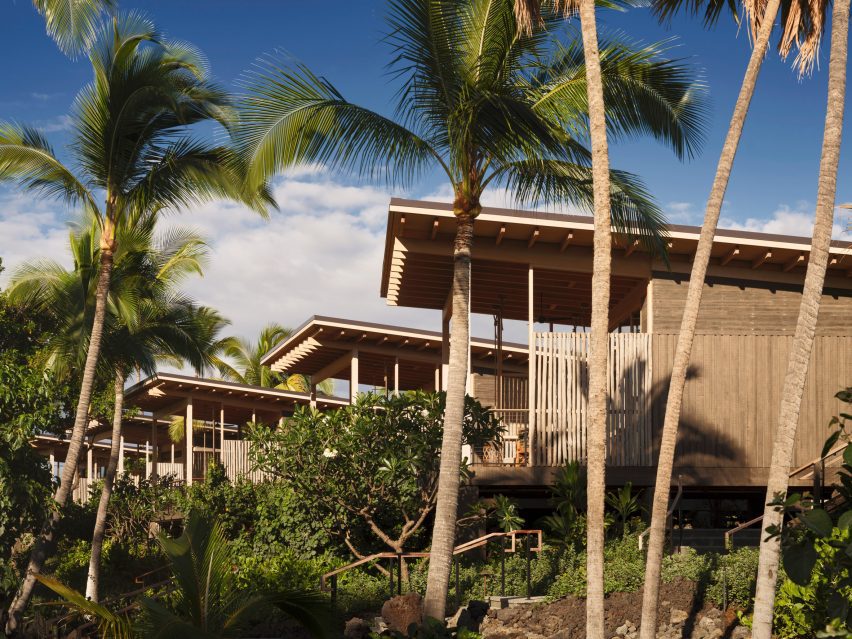
Occupying a horseshoe-shaped site that wraps Kahuwai Bay, the resort consists of scores of buildings, mostly hut-like structures called hale, the word used to describe a traditional Hawaiian home. The resort offers a total of 150 guest rooms.
The layout, forms and materials were informed by vernacular architecture and the natural terrain — and the design was “guided by a pledge to be as minimally disruptive to the land as possible”.
“When you come to Kona Village, it’s not about the architecture,” said Walker Warner Architects founder Greg Warner.
“You see right through the architecture to immediately understand the place, which was our intention.”
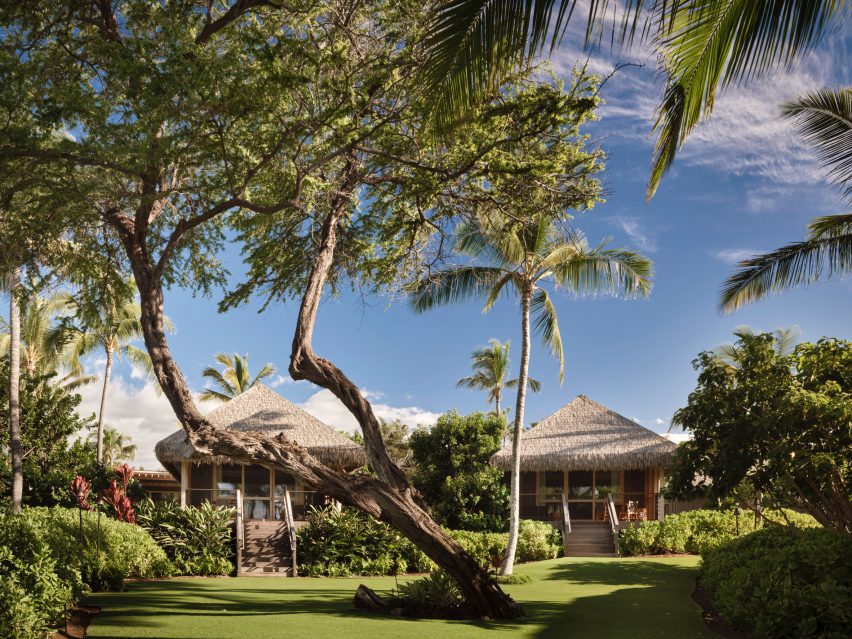
Guests arrive at a welcome centre, which features an informal living room that opens onto a lanai overlooking the bay. From there, visitors are taken along meandering paths to guest rooms.
Most structures have wood framing and hipped roofs wrapped in thatch made of recycled plastic. The exterior siding was inspired by coconut tree husks.
Buildings were sited to take advantage of breezes, thus reducing the need for air conditioning. Each guest room is a private lanai that encourages visitors to spend ample time outdoors.
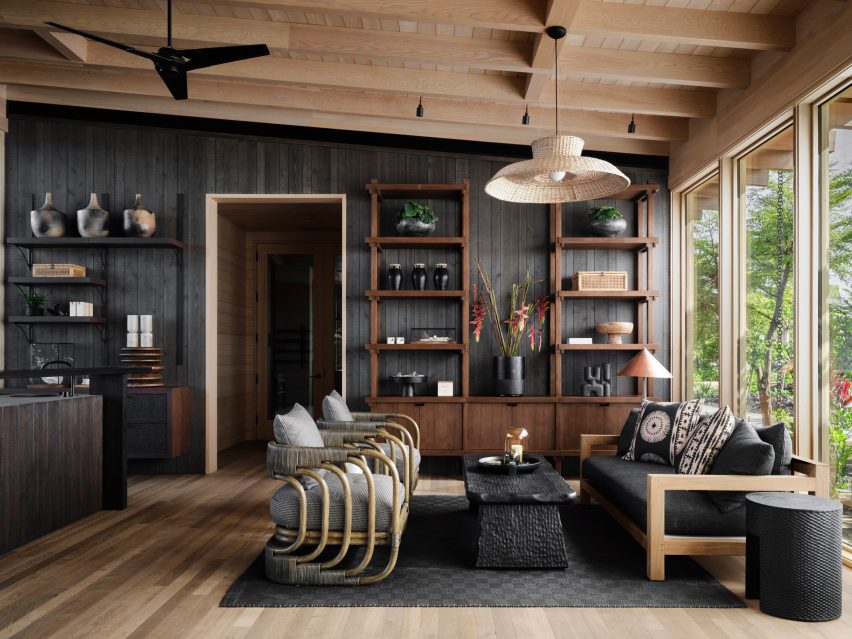
Several hale were lifted above the ground by stilts, offering elevated views of the ocean.
“Located mere feet from the ocean cliffs, these accommodations rest on their original foundations, providing sweeping views of the bay and direct access to the shoreline,” the team said.
The resort’s interior design was overseen by San Francisco studio Nicole Hollis, which sought to create a relaxed atmosphere informed by the surrounding context.
Earthy materials were used for custom furnishings, and floors were made of hand-scraped wood to lend a rustic appearance.
Special elements include beds inspired by the shape of boats and soaking tubs formed of dark concrete, meant to evoke the area’s hardened lava.
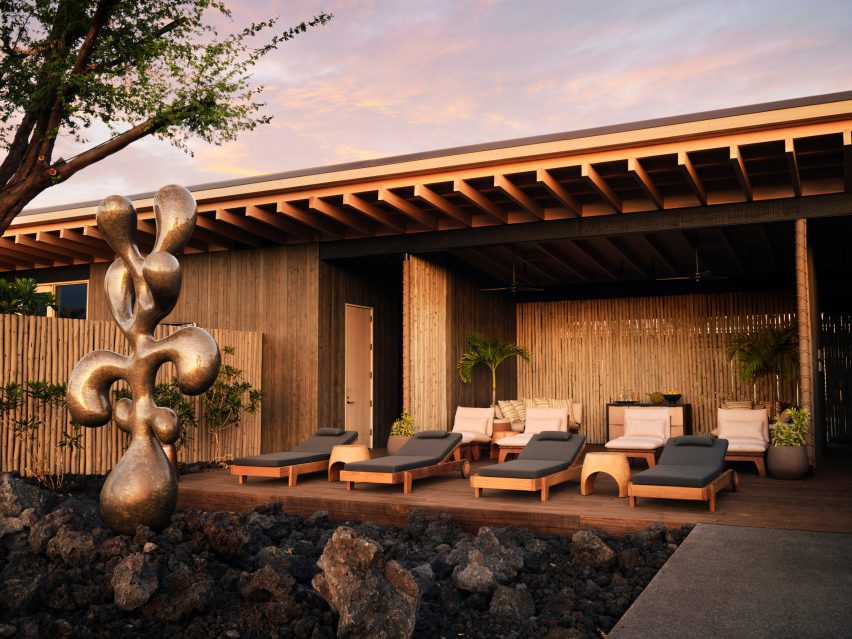
Different colours were used in different zones. The southern area of the resort features blues and yellows, a reference to the ocean and sandy beach, while the northern zone has black and red tones that refer to lava fields.
Near the centre of the site, shades of blue and green allude to a fish pond and its flora and fauna.
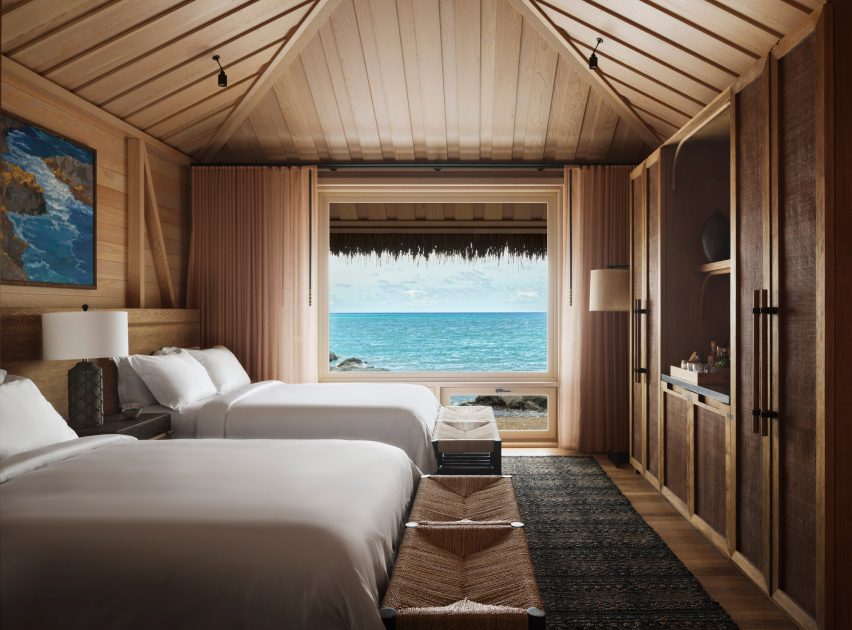
In addition to the welcome centre and guest rooms, the resort offers several restaurants and bars, including one housed in a shipwrecked schooner. There also is a spa, fitness centre, sports courts and swimming pool.
Moreover, the property has a cultural centre, where visitors can learn about the site’s history and early occupants.
The area was once a fishing village known as Kaʻūpūlehu, which was ravaged by lava flow from a volcano that erupted in 1800. The site features petroglyphs and other archaeological features, all of which were meticulously documented and preserved.

Sustainability was a guiding concern for the project, and several buildings at Kona Village have earned LEED Gold certification, the team said.
Various energy and water conservation strategies were incorporated, and power is generated via a solar field with over 8,000 photovoltaic panels, meeting nearly all of the resort’s energy needs.
The team collaborated with the nonprofit organization Re-Use Hawaii to salvage material from the old resort for the benefit of the local community.
Other hospitality projects in Hawaii include the Wayfinder Waikiki hotel, which features interiors by The Vanguard Theory that merge brutalist architecture with tropical motifs.
The photography is by Douglas Friedman.
Project credits:
Design architect: Walker Warner
Walker Warner team: Mike McCabe and Greg Warner (principals); John Lacy, Gloria Kim and John Pierson (senior project managers); Chris May (project manager); Chris Ryan, Philip Viana and Matthew Yungert (job captains); Lawrence Raposo (designer)
Executive architect: Delawie
Interior design: Nicole Hollis
Lighting: The Ruzika Company
Structural engineering: GFDS Engineers
Mechanical engineering: Isynergy
Electrical and plumbing: Isynergy
Civil engineering: Sam O Hirota
Geotechnical engineering: Geolabs
Technology: Engineering Plus
Signage: Image Global Vision
Fire protection: Isynergy
Contractors: Ali’i Builders, Nordic PCL, Goodfellow Brothers, Re-Use Hawai’i
Client: Kennedy Wilson
Operator: Rosewood Hotel Group

